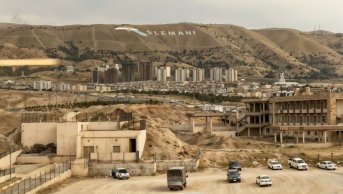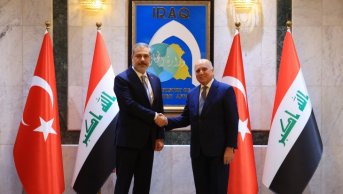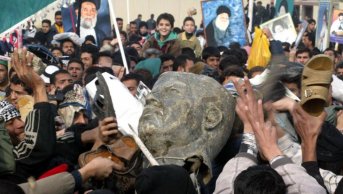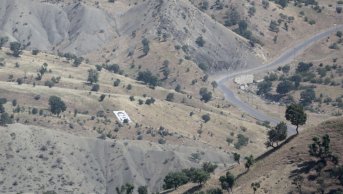Legalization of Hashd Al-Shaabi and The Expectations Regarding Iraq’s Future
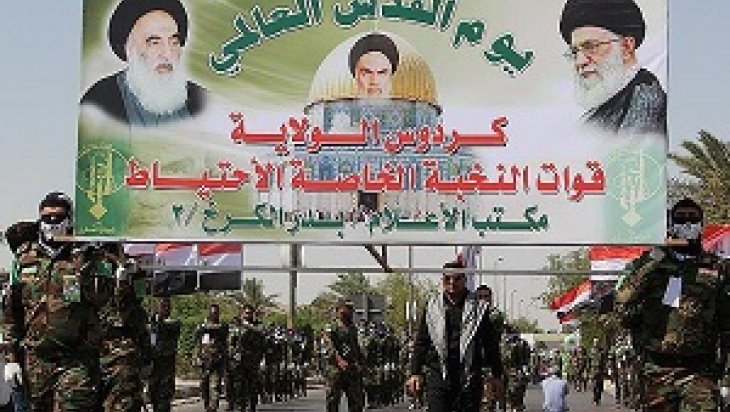
On November 26, 2016, Iraqi Parliament took a vote with the presence of 208 MPs, and ratified a law regarding the legalization of Hashd al-Shaabi, the most controversial actor in Iraq since the rise of ISIS. Through this law, Hashd al-Shaabi legally gained legitimacy. According to the 7-article law, Hashd al-Shaabi, as an independent organization in the Iraqi Army reporting to the Prime Minister, shall have a commandership and a mechanism of its own, shall be subject to military law; salaries, ranks and promotions shall be determined similarly to the regular army; shall have no link to politics or any political party, and the organizational structure of Hashd al-Shaabi shall be determined within 3 months. So Hashd al-Shaabi, formed as militia force in order to support Iraqi security forces in June 2014, after ISIS captured Mosul, by fatwa of Ayetollah Ali El-Sistani, the most influential Shiite authority in Iraq, became an official security force. However the disputes and concerns regarding Hashd al-Shaabi still continue, despite its legal and official status.
The formation of Hashd al-Shaabi is quite complicated and its structure is unclear. There are members from around 60 armed forces within Hashd al-Shaabi. It is claimed that there are 140 thousand registered people in Hashd al-Shaabi and a budget from 2017 budget is to be allocated for 122 thousand Hashd al-Shaabi members. As Hashd al-Shaabi is an official force, all members of this force has become a force under the control of the government. But the law does not forecast anything regarding the militia groups. The members of militia groups have become official as part of Hashd Shaabi, but it is interesting to see no article in the law that mentions the status of militia groups as there are armed forces operating directly under militia groups apart from Hashd al-Shaabi. Therefore it is not possible to know the exact number of armed groups and their fighters. Also different groups operate different regions. This is why the activity and the numbers of these groups differ. The new official statusof Hashd al-Shaabi may be an important step in order to put an end to complications and prevent ganging up of these groups, but their absence in the law, whether these groups will continue to exist or not and what position they will have are a subject of debate.
First of all, the sectarian identity of Hashd al-Shaabi raises question marks regarding its legitimacy, as Hashd al-Shaabi operates with jihad fatwa of Ayetollah Ali al-Sistani, the most influential Shiite authority in Iraq. So it is possible to clearly observe the Shiite identity and Shiite emphasis in Hashd al-Shaabi. A lot of elements like flags, pennants, photos and slogans symbolizing Shiism are emphasized in the operations conducted by Hashd al-Shaabi members against ISIS. This fact causes the Iraqi people to question the legitimacy of Hashd al-Shaabi. Currently there is no conflict between militia groups – Kurds and Sunni Arabs, except for a few local incidents, but there is a possibility for the tension between the parties to turn into a large-scale conflict.
Despite the efforts of legalizing Hashd al-Shaabi and saying that Hashd al-Shaabi consists of members from all parts and segments of Iraq, it is possible to say that the Sunnis and the Kurds are perturbed by Hashd al-Shaabi and militia groups. Even the Shiites are disturbed by Hashd al-Shaabi and the militia groups. It is known that a group of people within Hashd al-Shaabi behaves in a way that is disturbing to the people, and hence even the Shiites have started to react negatively, although it is not social and massive. There are also reactions due to the deaths of many Shiites in the fight against ISIS while the Sunnis did not fight to save their own regions and people have started to question the existence of Hashd al-Shaabi. Even though people consider Hashd al-Shaabi as a savior, some groups within Hashd al-Shaabi have started to prompt reactions. The people are perturbed by the actions of some groups within Hashd al-Shaabi like theft, robbery, kidnapping, racketeering. Also the activities of these groups in the regions under their control draw the attention of international media, as well as the non-governmental organizations. The research conducted by reputable international institutions and organizations, notably Amnesty International, Human Rights Watch revealed, with proof, that some groups in Hashd al-Shaabi have engaged in activities that violate human rights. At this point, in case Hashd al-Shaabi, integrated in the systematics of Iraqi government, continues to behave like militia, maintaining its oppressive activities through state apparatus might turn these activities into a government policy.
Thus it is possible to say that the government has a legitimacy problem, as well. The existence of militia groups is weakening the legitimacy of Iraqi government, even if Hashd al-Shaabi has become a dependent and responsible organization after being legalized. The fact that the government is trying to ensure security and maintain order with disorganized militia groups, instead of building a structure by strengthening the security units like the army and the police force, which would bring stability for the state; could harm the institutionalization in the state.
It may appear as if Hashd al-Shaabi is fighting ISIS as a whole but in the battle field each group within Hashd al-Shaabi has their own flag and follows the orders of their own leader. If Iraqi government were to control Hashd al-Shaabi, it would not be easy to control such an organization which includes members from 60 different groups. Even if it was under control, previous examples in Iraq show that it is possible for Hashd al-Shaabi to disintegrate. Also the big militia groups pressure, and try to control the little militia groups almost in every region as the militia groups other than Hashd al-Shaabi continue to exist. So there is a possibility to see the dynamics of conflict among these groups.
Even if Hashd al-Shaabi is integrated into Iraqi security forces, it is possible to say that these militia groups will continue to have their group attachments ideologically and politically after the ISIS threat is eliminated. Even if they are not part of the government they might claim administrative share in the regions where they have control or are active. In this way, the central government may turn into a weakened structure and may cause localization to increase. Also there is a big chance to encounter militializing and struggle for control within the Iraqi state structure. Previous experiences, happened years ago, are indicating this possibility. Even though the law states that Hashd al-Shaabi cannot have connections with any political party or have any political objectives, it is a fact that the militia groups within Hashd al-Shaabi have political connections. It is known that the Shiite MPs in Iraqi parliament and the groups within Hashd al-Shaabi have connections. The best example for this is the Badr Organization, known as the biggest and the most influential group within Hashd al-Shaabi. Emerging as the armed force of the Islamic Supreme Council of Iraq (ISCI) after 2003, Badr Organization, then, appeared as a separate organization after splitting from ISCI. There are MPs in Iraqi Parliament which report to Badr Organization. This many enable Hashd al-Shaabi to create pressure on politics.
Furthermore, it is obvious the groups in Hashd al-Shaabi are supported by Iran in terms of military, weapons, logistical. The presence of Iran in Iraq increases substantially through Hashd al-Shaabi. It is claimed that the Iranian military consultants do not take much part in direct operations and instead, have missions regarding military strategy, operational planning and education. So the plausibility of Hashd al-Shaabi is questioned. But in an environment where Hashd al-Shaabi is considered a force under the control of Iran, recognizing Hashd al-Shaabi as an official force under the control of Iraqi government with a law legislated by the Iraqi Parliament, is also interpreted as a move intended to limit the control of Iran. But the possibility of Iran having more influence on the Iraqi government, due to the fact that Hashd al-Shaabi is directly integrated into the systematics of the state, should not be forgotten.
There is also a negative perception of Turkey amongst some militia groups within Hashd al-Shaabi. Especially after the Bashiqa crisis, the leaders of some of these groups made statements which sounded as threats. Even though recently Turkey and Iraqi government have both been taking measures regarding relieve the tension between them, but the reactive approach regarding Turkey amongst Hashd al-Shaabi hasn’t stopped. So if Hashd al-Shaabi uses its position as part of the Iraqi security forces pressuring Iraqi government, it may not be possible to take positive measures regarding the relations between Iraq-Turkey.
All in all, it seems as though the uncertainties and disputes regarding Hashd al-Shaabi will continue, even though it gained a legal and official status. An effort to control Hashd al-Shaabi by a law may be a positive step for Iraqi government, but if the questions related to Hashd al-Shaabi are left unanswered, it is a matter of time before we experience dynamics of conflict and crisis.

